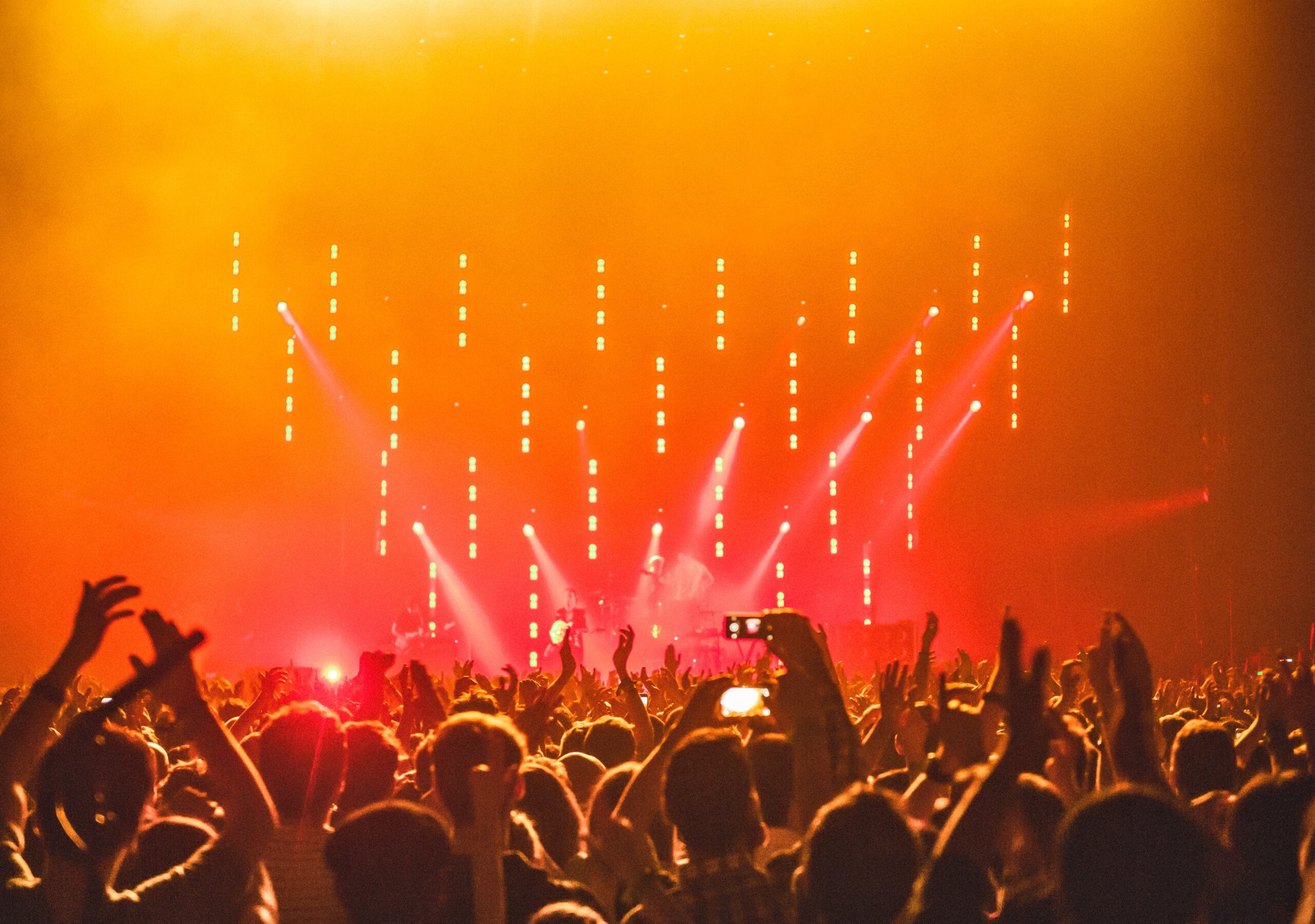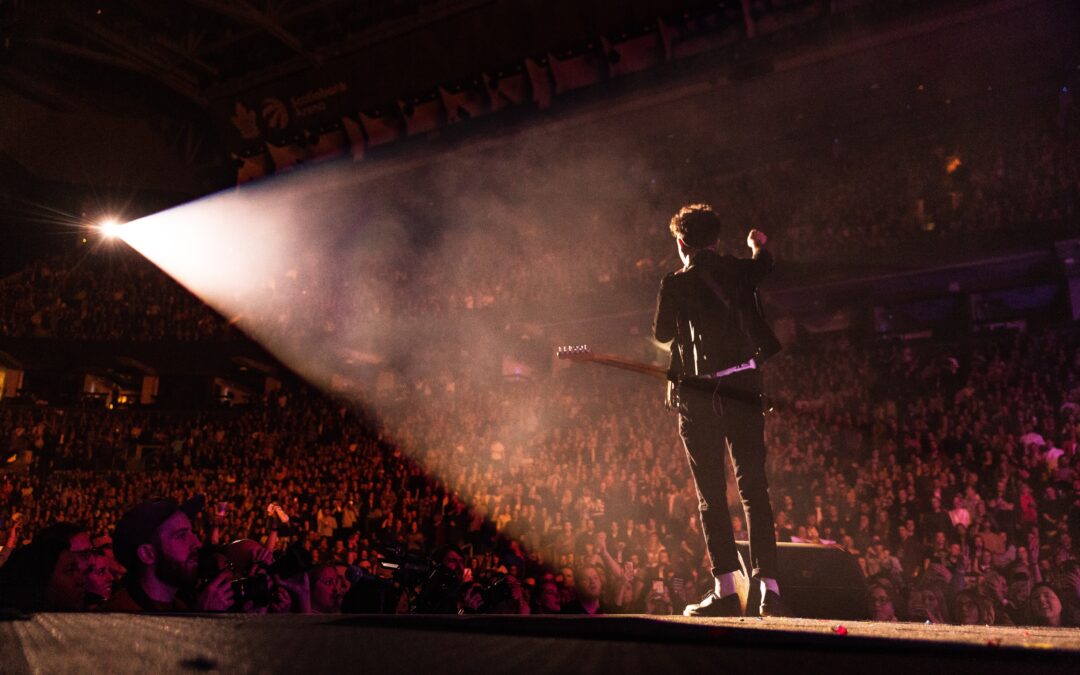Introduction
Stage presence is a crucial but often overlooked aspect of a musician’s journey. It’s not just about talent; it’s about the charisma and connection you establish with your audience. Whether you’re a classical pianist, a rock guitarist, or a hip-hop artist, mastering stage presence can elevate your performance and open doors to success.
So what is stage presence? Why does it matter? and how can you develop it as a musician?
Understanding Stage Presence
At its core, stage presence is the ability to captivate and engage your audience while performing. It’s the magnetic aura that draws people in, making them forget their surroundings and lose themselves in the music. However, it’s not just about showmanship or theatrics; it’s about authenticity and connection.
In the world of hip-hop, artists like Kendrick Lamar and Beyoncé exemplify this authenticity. They’re not just performers; they’re storytellers who use their presence to convey their message and connect with the audience on a deep level.
Differentiating Stage Presence from Musical Talent
While musical talent is undoubtedly essential, it’s not synonymous with stage presence. Some of the most technically skilled musicians can struggle with connecting to their audience, while others with less technical prowess can be captivating performers.
Take the example of Kurt Cobain, the iconic frontman of Nirvana. His guitar playing wasn’t overly complex, but his raw energy and emotional delivery made him an unforgettable presence on stage. His authenticity and vulnerability resonated with fans in a profound way.
The Psychological Impact of Developing Stage Presence
The psychology of stage presence is a fascinating subject. It involves understanding how the brain processes music and performance. When you’re on stage, your audience isn’t just listening; they’re watching, interpreting body language, and seeking an emotional connection.
Studies have shown that when a musician displays confidence and authenticity on stage, the audience responds with increased emotional engagement. This connection triggers the release of dopamine, a neurotransmitter associated with pleasure and reward. In essence, a compelling stage presence can make your music more enjoyable for your audience.
The Elements of Stage Presence
Confidence is the foundation of stage presence. It’s about believing in yourself and your music. In the world of hip-hop, Eminem’s confidence on stage is palpable. He exudes a sense of self-assuredness that captivates the audience, making them believe in his message.
Body Language and Posture
Your body language speaks volumes on stage. Open, confident posture conveys authority and engagement. Think of Freddie Mercury, the charismatic frontman of Queen. His commanding presence and dynamic body movements made every Queen concert an unforgettable experience.
Facial Expressions and Eye Contact
Facial expressions and eye contact are potent tools for connecting with your audience emotionally. In hip-hop, artists like Tupac Shakur were masters of conveying deep emotions through their facial expressions. They made their lyrics come alive through their eyes, drawing fans into their stories.
Interaction with the Audience
Interacting with the audience is another crucial element of stage presence. In pop music, Taylor Swift is renowned for her ability to connect with her fans. She often shares personal anecdotes and engages in banter, creating a sense of intimacy in a stadium filled with thousands.
Wardrobe and Image
Your image and wardrobe are an extension of your stage presence. They help convey your style and message. Think of how Lady Gaga uses elaborate costumes and visual elements to enhance her performances. Her stage presence is a full-sensory experience, immersing the audience in her artistic vision.
Developing Confidence
Stage fright is a common obstacle for many musicians. Even the most seasoned performers, like Adele, have admitted to experiencing it. Overcoming stage fright involves a combination of techniques such as deep breathing, visualization, and rehearsal.
Building Self-Esteem and Self-Assurance
Building self-esteem and self-assurance is an ongoing process. It involves recognizing your strengths and accepting your weaknesses. Hip-hop artist Lizzo is a powerful advocate for self-love and confidence. Her music and stage presence promote body positivity and self-acceptance, resonating with fans worldwide.
Utilizing Visualization Techniques
Visualization is a powerful tool for building confidence and improving stage presence. Before a performance, envision yourself on stage, exuding confidence, and connecting with the audience. This mental rehearsal can boost your self-assurance and prepare you for the real thing.

Mastering Body Language
Body language is a non-verbal form of communication that can make or break your stage presence. Studies have shown that audiences are more drawn to performers who use open and expansive body language. This includes gestures that convey passion, energy, and authenticity.
Exercises to Improve Body Awareness
To improve your body language, consider practicing in front of a mirror or recording your performances. Analyze your movements and gestures, making adjustments to convey the desired emotions. Work on synchronizing your body language with the music’s rhythm and mood.
Creating a Comfortable Stage Persona
Finding a stage persona that feels authentic to you is essential. It’s not about becoming someone you’re not, but rather amplifying the most charismatic and captivating aspects of your personality. In hip-hop, artists like Jay-Z and Nicki Minaj have crafted larger-than-life personas that align with their music and captivate audiences.
Communicating Through Facial Expressions and Eye Contact
Your face is a canvas for conveying emotions. In the world of pop music, artists like Adele excel at this. Her expressive facial expressions and emotional delivery allow her to connect with her audience on a deeply emotional level. Her sincerity shines through in every performance.
Establishing Eye Contact with the Audience
Eye contact is a powerful tool for building a connection with your audience. It creates a sense of intimacy and engagement. Artists like Bruce Springsteen are known for their intense eye contact with fans. It’s as if they’re singing directly to each individual in the audience, making every person feel seen and valued.
Exercises to Enhance Facial Expressions and Eye Contact
Practice maintaining eye contact with a friend or bandmate while performing. Work on conveying different emotions through your facial expressions, from joy to sadness to intensity. These exercises can help you become more comfortable and expressive on stage.
Engaging with the Audience
Building a connection with the audience involves more than just playing music. It’s about creating an experience that resonates with your fans. In hip-hop, artists like Kanye West often interact with the crowd in unexpected ways, creating memorable moments that fans cherish.
Interacting with the Audience Through Music
Your music can be a powerful tool for interaction. Encourage the audience to sing along, clap, or participate in call-and-response segments. This level of engagement not only makes the audience feel involved but also enhances the overall atmosphere of the performance.
Handling Stage Banter and Communication
Effective stage banter can enhance your stage presence. It can be as simple as thanking the audience or sharing a personal story related to a song. In pop music, artists like Ed Sheeran are masters of this. They create a sense of intimacy and connection through relatable and genuine communication with the audience. It’s not about following a script but being in the moment and connecting on a personal level.
Crafting Your Image
Your image plays a significant role in how your audience perceives you. In the world of hip-hop, artists like Drake understand the importance of image. Their branding extends beyond music, encompassing fashion, lifestyle, and cultural relevance. Your image should align with your music and resonate with your target audience.
Choosing the Right Wardrobe
Wardrobe choices can help convey your style and message. Consider the evolution of artists like Madonna, who continually reinvented her image through fashion. Your wardrobe should reflect your identity as an artist while keeping your comfort and practicality in mind for performances.
Creating a Consistent Brand
Consistency is key to a successful image and brand. Develop a cohesive look and message across all your promotional materials, social media profiles, and stage appearances. This consistency helps fans recognize and connect with you as an artist. Hip-hop artist Cardi B, for example, has built a brand around her bold personality and distinctive fashion choices.
Checkout: Overcoming Performance Anxiety as a Musician
Practical Tips for Rehearsing Stage Presence
Stage presence should be an integral part of your rehearsal process. Practice not only your music but also your movements, gestures, and interactions with band members. Rehearsing in a setting that mimics the stage environment can help you become more comfortable with the physical aspects of performing.
Feedback and Evaluation
Seek feedback from trusted sources, such as bandmates, coaches, or mentors. They can offer valuable insights into your stage presence. Recording your rehearsals and performances allows you to review and analyze your stage presence objectively.
Recording and Self-Analysis
Recording your performances is a valuable tool for self-analysis. Watch the recordings and pay attention to your body language, facial expressions, and audience interaction. Identify areas for improvement and set specific goals for enhancing your stage presence.
Case Studies of Successful Musicians with Strong Stage Presence
Let’s look at some iconic performers across various genres who have mastered the art of stage presence:
Michael Jackson – The King of Pop was known for his electrifying stage presence. His dance moves, elaborate costumes, and magnetic charisma made every performance an unforgettable spectacle
Beyoncé – Queen Bey’s stage presence is unparalleled. Her powerful vocals, flawless choreography, and emotional delivery create a mesmerizing experience for her audience.
Mick Jagger – As the frontman of The Rolling Stones, Jagger’s high-energy performances and dynamic stage presence have defined rock ‘n’ roll for decades.
Eminem – The rap legend’s intense and emotional delivery, combined with his unwavering confidence, make him one of hip-hop’s most captivating performers.
Freddie Mercury – The charismatic frontman of Queen had an extraordinary ability to connect with the audience through his stage presence. His theatrical performances and soaring vocals left a lasting impact.
What We Can Learn from Their Stage Presence
These artists share several common traits that contribute to their exceptional stage presence:
Confidence: They exude confidence, making the audience believe in their abilities and message.
Authenticity: They stay true to themselves, allowing their unique personalities to shine through.
Connection: They establish a deep connection with the audience, drawing fans into their world.
Showmanship: They understand the importance of entertainment and create memorable moments during their performances.
Preparation: They invest time and effort into rehearsals and refining their stage presence.
Overcoming Common Challenges
Dealing with Stage Anxiety and Nervousness
Stage anxiety is a challenge that even seasoned musicians face. To overcome it, consider techniques such as controlled breathing, positive visualization, and mindfulness. Additionally, remember that some degree of nervousness is normal and can actually enhance your performance.
Handling Technical Mishaps
Technical mishaps can be nerve-wracking, but they’re a part of live performance. Prepare for contingencies by rehearsing with backup equipment and having a plan in place for when things go wrong. How you handle these situations can actually enhance your stage presence.
Staying Consistent with Stage Presence
Consistency is key to maintaining strong stage presence. Make stage presence a part of your regular practice routine and maintain your image and branding throughout your career. As you evolve as an artist, ensure that your stage presence evolves with you.
Conclusion
In the world of music, talent alone is not enough to captivate an audience. Developing stage presence is an art that can elevate your performances to new heights.
It involves confidence, body language, communication, image crafting, and practice. By understanding the psychological impact of stage presence and learning from iconic performers in various genres, you can unlock your full potential as a musician.
Remember that stage presence is a journey, not a destination. It requires ongoing effort and self-reflection. Embrace your uniqueness, connect with your audience, and let your authentic self shine through on stage.
As you continue to develop your stage presence, you’ll not only create memorable performances but also forge a deeper connection with your fans and ultimately propel your music career to new horizons.






